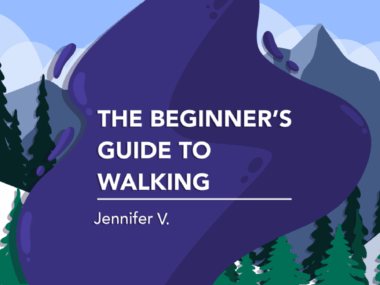The pain of tonic spasms for those of us with NMOSD
I've had them while crossing an intersection, and have even lost consciousness
Written by |

Tonic spasms come on suddenly, last seconds to minutes, and feel like an eternity. They’re a painful and daily reality for many with neuromyelitis optica spectrum disorder (NMOSD). And since my recent transverse myelitis (TM) attack, I’ve been experiencing them multiple times a day.
These spasms cause intense muscle contractions, making the affected limb stiff. Mine started in one leg and, within a week after my TM attack, spread to both legs and arms. I joke with my family that these spasms turn me into a zombie for a couple of minutes.
But tonic spasms are no laughing matter. The pain is so intense it takes my breath away, making it difficult to focus on breathing — which is why these spasms can sometimes lead to losing consciousness. That’s happened to me before, and while I was fortunate to be at home each time, it’s still terrifying.
During a spasm, my nerves feel like they’re in overdrive, as if boiling water were being poured down the side of my body. It’s the worst pain I’ve ever felt, and it’s why I fear them. Dealing with this pain has led me into depression and other dark thoughts, but this time, I’m being proactive by working with a social worker and psychiatrist.
Tonic spasms can be subtle or obvious. Sometimes my knees buckle slightly, leaving me stuck in a small bend. If I’m barefoot, you can see my feet lock and toes cramp into unnatural positions. During a spasm, I cannot move or lift my legs.
There’s no predicting when they’ll strike, which can be inconvenient, especially when I’m out in public. One occurred while I was crossing a busy intersection, and I had no choice but to stop traffic.
Some triggers, however, allow me to predict the oncoming pain. Turning over after sleeping in the same position too long, standing up after sitting at my desk for too long, or using a toilet that’s too low: All can trigger a spasm for me. Yes, I’ve been stuck in a public washroom before, and yes, it was embarrassing.
Other times, these spasms come out of nowhere. Once I had to miss my floor in an elevator. Another time I could barely make it to the Starbucks counter when they called my order.
How I handle the spasms
These spasms are painful, destructive, and largely unpredictable. But as I navigate this challenge, I’m learning to adapt and seek the right support. My specialists have prescribed me a higher dose of gabapentin and baclofen to manage them. Some NMOSD patients have also tried Botox (botulinum toxin) injections.
While the drugs have lowered the pain, they haven’t eliminated the spasms completely. When I had my first TM attack 15 years ago, I also had tonic spasms. It took time to make them go away completely, so I’m hoping that’ll be the case this time, too.
When it’s difficult to move around after a TM attack with tonic spasms, it’s surprising how much and how quickly our muscles atrophy. That’s why getting physical activity and working with a physiotherapist are important, despite how challenging it can be to get around. It’s also why it’s important to stay hydrated, because managing proper electrolyte balance can potentially eliminate muscle cramps or spasms.
While many NMOSD patients, including me, are plagued by the unpredictable and painful nature of these tonic spasms, there’s comfort in knowing we aren’t alone. In addition, more neurologists are recognizing how common these spasms are as an NMOSD symptom, so they’re doing more to treat them.
Have you or a loved one with NMOSD ever dealt with tonic spasms? Please share your thoughts and stories in the comments below.
Note: Neuromyelitis News is strictly a news and information website about the disease. It does not provide medical advice, diagnosis, or treatment. This content is not intended to be a substitute for professional medical advice, diagnosis, or treatment. Always seek the advice of your physician or other qualified health providers with any questions you may have regarding a medical condition. Never disregard professional medical advice or delay in seeking it because of something you have read on this website. The opinions expressed in this column are not those of Neuromyelitis News or its parent company, Bionews, and are intended to spark discussion about issues pertaining to neuromyelitis optica spectrum disorder.





Leave a comment
Fill in the required fields to post. Your email address will not be published.